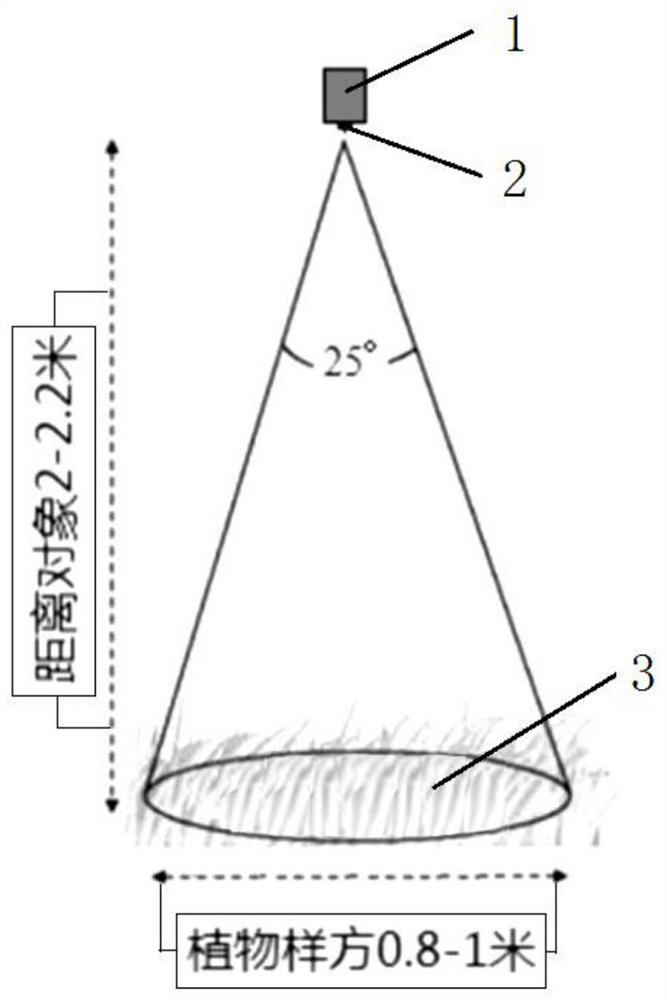Model and method for estimating plant species diversity based on hyperspectral remote sensing data
A hyperspectral remote sensing and diversity technology, applied in the measurement of scattering characteristics, etc., can solve the problem of plant species diversity without an effective hyperspectral monitoring model.
- Summary
- Abstract
- Description
- Claims
- Application Information
AI Technical Summary
Problems solved by technology
Method used
Image
Examples
Embodiment 1
[0045] The plant spectrum is collected with a hand-held ground object spectrometer (FieldSpec H2, or ASD or other spectrometers that meet the requirements can be selected), the spectral range is 325-1075nm, the spectral resolution is 3nm, and the sampling interval is 1nm. Spectral measurements were carried out in sunny weather with wind force less than level 3, and the collection time was from 10:00 to 15:00 local time. The surveyors wear dark clothing to avoid blocking the sun and avoiding spectral interference. The probe of the measuring instrument is vertically downward and kept within 2-2.2m above the canopy to ensure that the canopy of the plant sample quadrat to be measured is filled with the field of view of the measuring instrument, and the average value is obtained by repeating the measurement 10 times for each sample. Before the measurement, the radiation spectrum reflected by the reference whiteboard is measured synchronously for calibration, and the system is optim...
PUM
 Login to View More
Login to View More Abstract
Description
Claims
Application Information
 Login to View More
Login to View More - R&D
- Intellectual Property
- Life Sciences
- Materials
- Tech Scout
- Unparalleled Data Quality
- Higher Quality Content
- 60% Fewer Hallucinations
Browse by: Latest US Patents, China's latest patents, Technical Efficacy Thesaurus, Application Domain, Technology Topic, Popular Technical Reports.
© 2025 PatSnap. All rights reserved.Legal|Privacy policy|Modern Slavery Act Transparency Statement|Sitemap|About US| Contact US: help@patsnap.com

